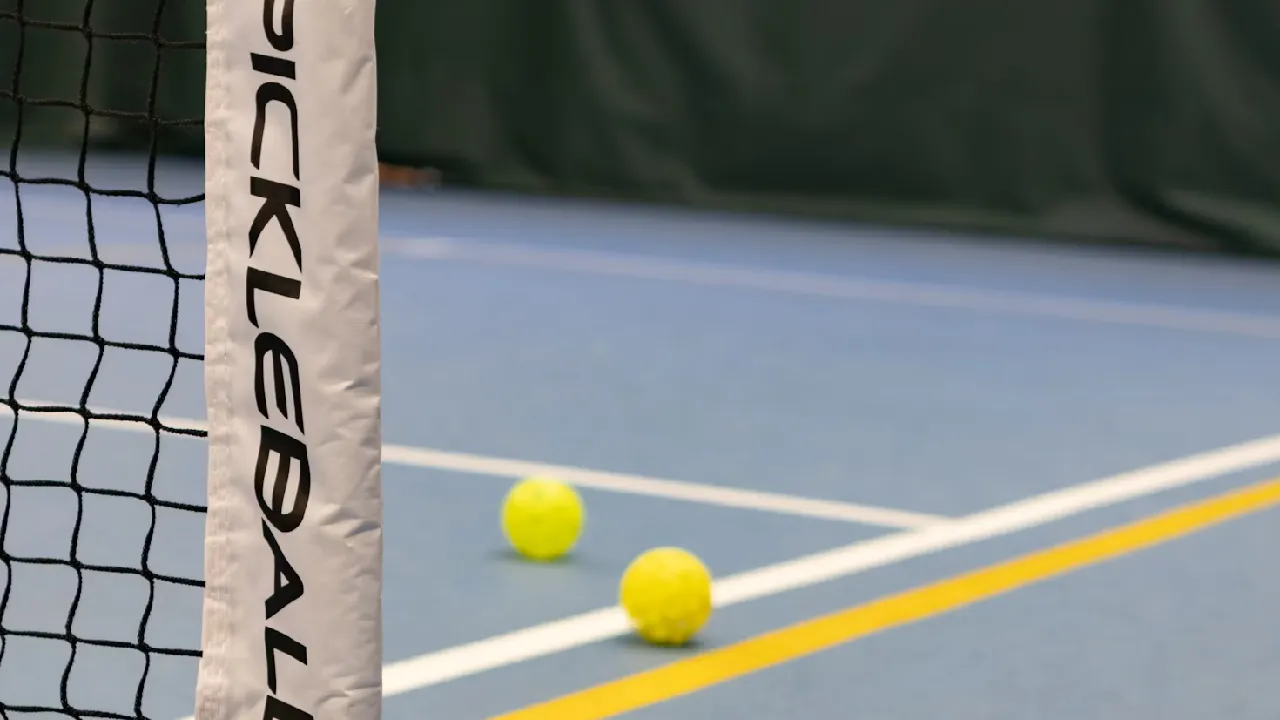Why Pickleball is Called Pickleball - Know the facts!
Pickleball is one of those sports that seems to come out of nowhere and take over your life. You hear people talking about “dinking” and “the kitchen,” you see bright courts popping up in parks, and suddenly everyone—from grandparents to college athletes—is wielding paddles and chasing a perforated plastic ball. But have you ever stopped to ask, “Why is it called pickleball?” The name is quirky, unexpected, and downright fun—just like the game itself. In this blog, we’re going to unpack the full story and get into the nitty-gritty of how a weekend family pastime became a national sensation.
The Birth of a New Sport
A Summer Experiment
In the summer of 1965, on Bainbridge Island near Seattle, Washington, three friends—Congressman Joel Pritchard, businessman Bill Bell, and engineer Barney McCallum—found themselves with a stretch of concrete and a few pieces of sports equipment. Their kids were bored, so they improvised: they lowered a badminton net, grabbed ping-pong paddles, and used a Wiffle ball. This “mash-up” quickly revealed a unique blend of quick volleys, strategic dink rallies, and a constantly moving court—elements borrowed from tennis, badminton, and table tennis.
Defining the Basics
Before long, Pritchard, Bell, and McCallum had formalized the initial rule set:
Court Dimensions: 20′ × 44′, the same footprint as a doubles badminton court.
Net Height: 34″ at the center, 36″ at the sidelines—slightly lower than a tennis net to encourage groundstrokes and volleys.
Equipment: Solid paddles (initially wooden, later composite or graphite) and a perforated plastic ball with 26–40 holes.
Scoring: Games to 11 points (win by two), side out scoring in early years, later shifting to rally scoring in some tournaments.
The “Pickle Boat” vs. “Pickles the Dog”—Origins of the Name
Most fans are aware of two competing origin stories for the term “pickleball,” and part of the fun is seeing which one you believe.
The “Pickle Boat” Theory
The Pritchard family—and especially Joel’s wife, Joan—often told the story that the name came from the “pickle boat.” In rowing regattas, the pickle boat is the last boat to return to shore, composed of leftover rowers from various shells. Joan Pritchard felt the sport’s hodgepodge beginnings—borrowing bits and pieces from different games—mirrored the mixed-crew nature of a pickle boat. Thus, the name “pickleball” was born as a nod to its eclectic lineage.
The “Pickles the Dog” Myth
An alternate tale, popularized in media and social channels, claims the sport was named after the family dog, Pickles, who chased stray balls and became an unofficial mascot. While adorable, this story doesn’t line up with timelines: Pickles the dog didn’t join the family until a year after the game’s invention. Still, it’s a fun bit of lore that’s stuck around because, let’s face it, it’s just so charming.
Related Read | Pickleball Court Rules You Should Know Before Playing
Why the Name Stuck
Branding and Memorability
In an era before viral marketing, “pickleball” stood out. It’s playful, evokes curiosity, and is instantly memorable. Compare that to generic names like “paddle tennis” or “mini-tennis,” and you see why a quirky moniker can give a sport remarkable branding power.
Reflecting the Game’s Personality
Pickleball is social, community-driven, and approachable. The name mirrors that vibe—it’s casual, a bit whimsical, and implies a sport that doesn’t take itself too seriously. It invites newcomers to try it without intimidation.
Industry Adoption
Early adopters—local clubs, community centers, and recreation departments—embraced the term. As tournaments and leagues formed, “pickleball” entered official lexicons: rulebooks, equipment catalogs, and near-constant media coverage. The USA Pickleball Association (USAPA) formed in 1984, cementing the name in the organizational structure of the sport.
Industry-Specific Terminology Tied to the Name
The quirky name didn’t just stick in the headline—it shaped the language of play itself:
Paddle: Early wooden paddles evolved into modern composite and graphite designs with textured faces for spin generation.
Kitchen: The 7′ non-volley zone on either side of the net, humorously named for its “no-volley” cooking metaphor—don’t get burned by net rushes.
Dink: A soft, controlled shot from near the kitchen line—reminiscent of a gentle pickle preserving action.
Erne: A fancy around-the-net volley, akin to an “Erne” shortcut in pickle boat rowing.
Third Shot Drop: A soft drop shot on the third stroke of the rally, neutralizing aggressive positioning.
Poach: A net rush or interception, often used in doubles to capitalize on the opponent’s second return.
These terms became part of the shared lexicon, reinforcing pickleball’s distinct identity among racket sports.
Cultural Resonance and Evolution
Community-Driven Growth
From the Pritchards’ backyard to YMCAs, retirement communities, and professional sports complexes, pickleball’s name fueled grassroots growth. Local “Pickleball Nights,” “Pickleball Tournaments,” and even “Pickleball Festivals” sprang up, each leveraging the playful brand to attract participants.
Digital and Media Presence
Social media channels—#pickleball, @pickleball—helped the sport go viral. Memes about “kitchen rules” and “dinking for days” spread among Millennials and Gen-Z, while Baby Boomers appreciated the low-impact, high-social engagement. Equipment brands like Onix, Selkirk, and Paddletek leaned into the name with fun graphics and product lines that highlighted pickle imagery and playfulness.
Professionalization
As the sport matured, professional tours (e.g., the PPA Tour, the APP Tour) and high-stakes tournaments adopted pickleball’s branding. Broadcasts on ESPN and CBS Sports minted “Pickleball Pros” who became ambassadors of the name—interviewing about “how the name came to be” and reinforcing it as a hallmark of the sport’s identity.
Deconstructing the “Pickle” Element
Linguistic Appeal
“Pickle” is a short, punchy word with positive, familiar connotations: tangy, savory, and homemade. It triggers sensory memories—a crisp crunch—that contrast nicely with the high-speed action of the sport.
Psychological Impact
Approachability: New players aren’t intimidated by “pickleball” the way they might be by “squash” or “racquetball.” It sounds friendly.
Multigenerational: The name bridges generations; grandparents and grandkids alike find it fun.
Curiosity: Non-players often ask, “What’s pickleball?” That question becomes a marketing hook.
Addressing the Myths—Separating Fact
Timeline Clarification
1965: Game invented; first called “Pickle Ball” in Pritchard family correspondence.
1966: The dog-naming myth arises within social circles but lacks documentary evidence.
1984: USA Pickleball Association officially forms; name standardized in rulebook.
2000s–2020s: Rapid growth; myths and urban legends flourish online.
Founder Testimonials
Joel Pritchard (in later interviews): Reaffirmed the “pickle boat” origin.
Joan Pritchard (family accounts): Coined the term based on her rowing background.
Barney McCallum: Confirmed the name resonated because of its off-beat charm.
What the Name Means for the Future
Brand Extensions
Pickleball-themed apparel, merchandise, and even cocktails (“pickleballita”) showcase how the name transcends sport. Courts are painted with pickle icons, and pro shops sell pickleball pickleballers kits with branded towels and water bottles.
Global Appeal
As pickleball expands overseas—to Canada, Europe, Asia, and Australia—the name remains a central part of the package. Translations keep “pickle” intact, maintaining brand cohesion. International federations incorporate the term into local languages (“Pickleball France,” “Pickleball Australia”), preserving its playful identity.
Innovation and Adaptation
New equipment innovations—such as carbon-fiber paddles with “PickleGrip” technology—leverage the sport’s unique name for marketing. Tech integrations (ball-tracking sensors branded “PickleSense”) keep the name at the forefront of sport-tech convergence.
Beyond the Name: The Heart of Pickleball
While the name “pickleball” is undeniably catchy, it’s the game’s community, accessibility, and strategic depth that drive its popularity. From beginners learning the “two-bounce rule” to pros executing precision slice serves, pickleball balances inclusivity with competitive rigor. The name simply signals, “You’re about to have fun,” and then delivers through:
Social Engagement: Organized mixers, ladder leagues, and family play.
Physical Benefits: Low-impact cardio, agility training, and social well-being.
Mental Challenge: Shot selection, positioning, and tactical adaptations.
Conclusion
So, why is pickleball called pickleball? Because its very essence is a “pickled” blend of racket sports, a community-driven mashup that’s as tangy and lively as the word itself. The “pickle boat” origin ties it back to a storied rowing tradition, while the myth of Pickles the dog adds a dash of backyard charm. More importantly, the name encapsulates the sport’s approachable, social, and multi-generational spirit.
From its humble beginnings on a Bainbridge Island driveway to sold-out stadiums and global tours, pickleball’s quirky name has been a secret sauce of its success. It’s a reminder that sports don’t need serious, intimidating branding to thrive—they need heart, creativity, and a name that makes people smile.
Whether you’re stepping onto a freshly painted court or buying your first composite paddle, remember: pickleball is more than a game—it’s a picklebration. Now grab your pickleball paddle, step out of the kitchen when you dine, and get ready to dink, volley, and rally in the sport with the most delicious name in the racket world.
COMMENTS
Sort by :





Leave A Comment